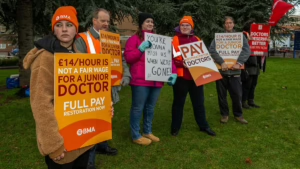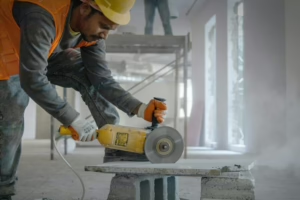Have you ever been involved in a high-stakes project with a lot of moving pieces and tight deadlines? Working with a large team can be messy, especially if you are handling something of this scale for the first time.
A Massive Collaboration
Recently, we completed a project that involved 100 people for a popular gaming franchise. The project took six months to complete and was an entirely new experience for us. Nine teams conducted their own retrospectives before the final review. After that, 25 people (including representatives from each team and senior management) joined a 4.5 hour online session to reflect upon the entire experience.
A project involving a well-known gaming IP was launched, involving approximately 100 people. The company had never done anything like this before. It took about six months to complete the project. Nine teams held preliminary retrospectives in their respective groups. The 4.5-hour review was conducted online by 25 participants, including managers and representatives of all teams involved.
The Challenge we Faced
There were two phases to the retrospective, and because there were so many participants, it took about a month from start to finish.
We faced three major challenges during preparation:
- Team coordination: Participants were involved in the project at various stages. Some teams did not interact directly, but indirectly influenced the work of others. Some teams joined mid-process. It was difficult to make real-time decisions because many critical issues affected multiple teams.
- Organizing Discussion: It seemed impossible to gather so many people, account for all feedback and conduct an effective discussion.
- We initially planned to use external experts because of concerns about workload. After two weeks of internal planning and negotiations, we were forced to take on the entire project ourselves. Due to time constraints, and issues with documentation, the second trainer could not be contacted. The event was offered by a major provider for a large fee, but they couldn’t meet the deadline.
Solutions
As I was negotiating with contractors, I slowly developed a plan to achieve the desired results. We developed a road map once it was clear that we would have to work independently.
- Create a template: Framework for teams to analyse their work, challenges both internal and external and key takeaways in 1.5 weeks.
- Developed a Collaboration Framework : As teams carried out internal analyses, I developed a structured approach to inter-team discussion, covering work processes and cross-team challenges, as well as strong solutions that could be implemented.
- Hosted a 25-person session: We met our deadlines with the help of an internal facilitator and carried out an in-depth assessment of challenges across various project stages.
- Shared findings: Documented key insights, shared with all participants of the project. Artifacts were distributed and thank you notes sent to stakeholders.
Behind The Scenes
Here’s an overview of the meeting for HR colleagues:
- Warm up: To begin emotional reflection and recall key moments, we began by assessing the project complexity.
- Reconstructing the Project Timeline : Each team recreated the major milestones by mapping out their responsibilities and involvement. It clarified the overlaps, handoffs and dependencies between teams.
- The teams were pre-arranged in order to maximize the intersections between them. They discussed the specific challenges associated with different phases of timeline.
- Prioritization and Root Cause Analysis: We identified the root causes of key challenges. Then, we formulated steps to resolve them.
- We recorded the expressions of thanks and acknowledged key contributors during the discussion. The key was to create a constructive and positive atmosphere.
Improvement Areas
There’s always room for improvement, even if the retrospective was largely successful. What I would do differently next time is:
- Plan earlier: Delaying planning the retrospective until after launch added unnecessary stress. The next time I would start planning halfway through the project.
- Get External Facilitators involved earlier : We could have done without them but an external facilitator would have provided fresh perspectives and lessened the burden on our internal resources.
- The session should be shorter: 4.5 hour was a long time. It might have been easier to manage if it was broken up into smaller sessions.
- Follow up More Consistently We could have done better to ensure accountability.
Key Takeaways
Participants relived their project journeys in a compressed format during the retrospective. The teams were able to:
- Effectively evaluate their work
- Identify growth opportunities
- Recognize your strengths and weaknesses
The process was intensely emotional but extremely productive. Everyone treated disagreements with respect and found ways to show appreciation for each other.
The project was a success and exceeded our expectations. It opened up new possibilities. The retrospective was crucial in extracting important learnings. We were able to launch our next collaboration with less effort and two months earlier. We are looking forward to new successes and challenges.
Final Thoughts
Even one month after the project ended, team members shared their gratitude through various communication channels. I am grateful for the opportunity to be a part of this inspiring project.
Looking back, I am filled with gratitude that I was a part of this inspiring project. It was not just a collaborative effort with a well-known entertainment IP. It was also a collective effort. It was the collaboration between them that made it so memorable.
I am excited about our upcoming project. We are stronger, more agile and more connected because of the lessons we’ve learned. Who knows? Who knows?


